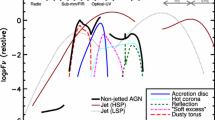Abstract
We consider gravitational radiation in the nonspherical symmetrical evolution of supernovae. Unlike the gravitational radiation analysis of Imshennik & Popov performed using the formalism of Peters & Mathews, our analysis uses the (PN)5/2 approximation by Damour & Deruelle and Lincoln & Will. We show that the eccentricity is larger than 0.1 at the time when the Roche lobe is filled by the low-mass component, demonstrating that the conclusion of Imshennik and Popov that the final eccentricity is less than 0.1 is incorrect. If the supernova lies in the Large Magellanic Cloud (R = 50 kpc), we estimate the amplitude of gravitational waves to be h ≈ 8 × 10-20. The frequency of the emitted gravitational waves is about 1 kHz.
Similar content being viewed by others
References
Imshennik, V.S.: 1992, ‘The possible Scenario of a Supernova Explosion as a Result of Massive Stellar Core and Gravitational Collapse’, Pis'ma v Astron. Zhurn. 18, 489–504
Blinnikov, S.I., Imshennik, V.S., Nadyozhin, D.K., Novikov, I.D., Perevodchikova, T.V. and Polnarev A.G.: 1990a, ‘Explosion of a Low — Mass Neutron Star’, Preprint Nordita 90/37 A, 1–12
Blinnikov, S.I., Imshennik, V.S., Nadyozhin, D.K., Novikov, I.D., Perevodchikova, T.V. and Polnarev, A.G.: 1990b, ‘Explosion of a Low — Mass Neutron Star’, Astron. Zhurn. 67, 1181–1194
Imshennik, V.S. and Popov D.V.: 1994, ‘Evolution of Eccentric Orbits of Neutron Star Binaries Emitting Gravitational Waves’, Pis'ma v Astron. Zhurn. 20, 620–630
Peters, P.C. and Mathews, J.: 1963, ‘Gravitational Radiation from Point Masses in a Keplerian Orbit’, Phys. Rev. 131, 435–440
Peters, P.C.: 1964, ‘Gravitational Radiation and the Motion of Two Point Masses’, Phys. Rev. 136, B1224–B1232
Damour, T. and Deruelle, N.: 1981, ‘Radiation Reaction and Angular Momentum Loss in Small Angle Gravitational Scattering’, Phys. Lett. 87 A, 81–84
Lincoln, C. and Will, C.: 1990, ‘Coalescing Binary Systems of Compact Objects to (post)5/2 Newtonian Order: Late — time Evolution and Gravitational Emission’, Phys. Rev. D 42, 1123–1143
Abalakin, V.K., Aksenov, E.P., Grebnikov, E.A., Demin, B.G. and Raybov, Yu.A.: 1976, Manual on Celestial Mechanics and Astrodynamics., Nauka: Moscow (in Russian)
Masevich, A.G. and Tutukov, A.V.: 1988, Stellar Evolution: Theory and Observations, Nauka: Moscow (in Russian)
Zeldovich, Ya.B. and Novikov, I.D.: 1971, The Theory and Stellar Evolution, Nauka: Moscow (in Russian)
Wagoner, R.V. and Will, C.M. (1976), Post — Newtonian Radiation from Orbiting Point Masses, Preprint OAP, 449, pp. 1–31.
Zakharov, A.F. (1995) On the Gravitational Radiation from Nonspherical Symmetrical SN Explosion, Report MPE, 261, Garching. Proc. of 17th Texas Symposium on Relativistic Astrophysics, pp. 213–214.
Zakharov, A.F. (1996a), Gravitational Radiation from Nonspherical Evolution of Pre-SN, Gravitational Waves: Sources and Detectors, Eldorado Amaldi Foundation Series, 2, World Scientific (in press).
Zakharov, A.F. (1996b), Gravitational Radiation During the Non — Spherically Symmetric Evolution of Pre — Supernova System, Astron. Zhurn., 73, pp. 605–613.
Author information
Authors and Affiliations
Rights and permissions
About this article
Cite this article
Zakharov, A. Supernovae as a Powerful Source of Gravitational Radiation. Astrophysics and Space Science 252, 213–224 (1997). https://doi.org/10.1023/A:1000838806364
Issue Date:
DOI: https://doi.org/10.1023/A:1000838806364




